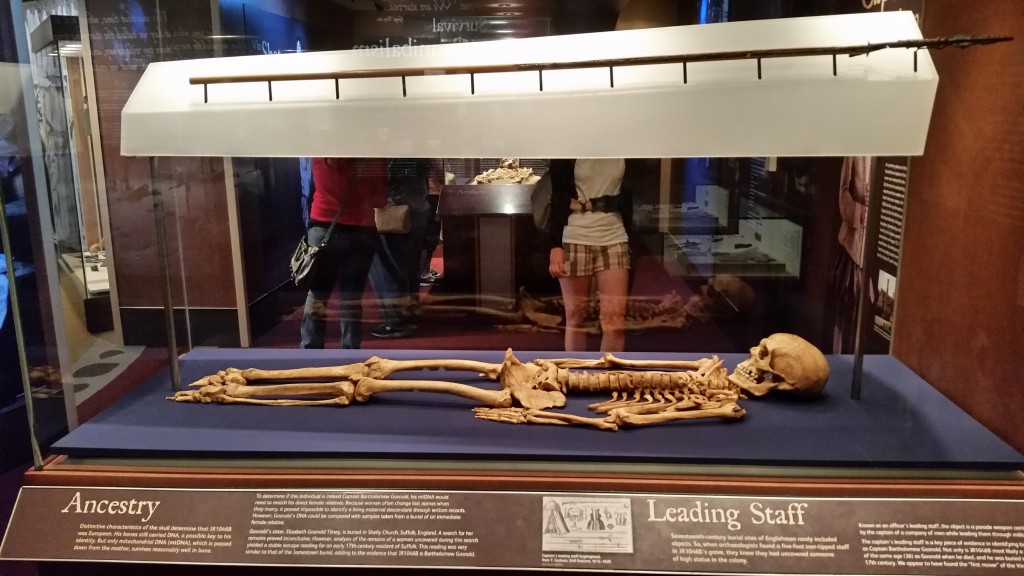I just finished eight days of showing students around some of the most important historical sites in Virginia, specifically those related to the founding of the nation. Where did we go and what did we see? Here’s an overview.
We began in Jamestown, where all things British America began. An excellent guide explained not only the history of the founding of the colony, but also took us to where the archaeological digs continue, while discussing the significance of the ongoing finds. Most know about John Smith and Pocahontas—whether the true story or the fantasized one—but not many know the name of the early leader of the expedition, the one who really made it happen: Bartholomew Gosnold. Why has he disappeared from our memories? He died in the first few months of settlement. They have since found his remains and his skeleton is on display.
 Naturally, we spent a couple of days in Colonial Williamsburg, where we visited as many of the key buildings as time permitted. Two that we couldn’t omit, of course, were the Capitol and the Governor’s Palace. For me, though, just the ambiance of this restored colonial town was the real attraction. A couple of times over the past week, I just took the time to stroll from one end to the other, enjoying the peace and the time for reflection and meditation.
Naturally, we spent a couple of days in Colonial Williamsburg, where we visited as many of the key buildings as time permitted. Two that we couldn’t omit, of course, were the Capitol and the Governor’s Palace. For me, though, just the ambiance of this restored colonial town was the real attraction. A couple of times over the past week, I just took the time to stroll from one end to the other, enjoying the peace and the time for reflection and meditation.
Along with Yorktown, the site of the final battle of the American Revolution, we also took some day trips to Monticello and Mt. Vernon, the homes of Thomas Jefferson and George Washington, respectively. The guide at Monticello was superb, as we got the behind-the-scenes tour that took us into the upper levels of the house where most tourists don’t go.
As always, we’re told about how much of a genius Jefferson was, and while I acknowledge his talents, I am saddened by his ultimate rejection of the divinity of Christ. Human reason alone never leads to truth.
Although I’ve been to Mt. Vernon numerous times, this was my first time back in about a decade. I was amazed at the transformation: new buildings, new and fascinating exhibits, a more welcoming atmosphere for visitors. Someday, I need to see the new Washington presidential library they now have on the grounds. Most impressive, to me, is that private funding has accomplished all this. I found one cartoon along the way to be too good to pass up. I had to take a photo of it to use in class:
 What a wonderfully sarcastic jab at the lack of respect often shown today.
What a wonderfully sarcastic jab at the lack of respect often shown today.
Yesterday was Richmond day. We had a great tour of the state’s historic Capitol building, a very informative visit to John Marshall’s home (wish I’d taken a picture), and then on to St. John’s Church where Patrick Henry delivered his famous “Give Me Liberty or Give Me Death” speech. In all my study of the era, I hadn’t picked up on how small Richmond was at the time of that speech—no more than 600 population. Yet within five years, it was the new capital of the commonwealth.
We capped off our day and our week and a half of intense sightseeing with a ramble through the Hollywood Cemetery, which includes the graves of presidents James Monroe and John Tyler. It’s a beautiful place, nestled just above the James River.
I want to commend the students for the interest they showed in seeing all these places, despite the fact that they are not history majors. Perhaps, though, they have come away with a deeper appreciation for what has come before. The current generation has so little understanding of the sacrifices and the principles that formed this nation.
This was my second annual excursion for this purpose. I hope it can continue for many more years.
